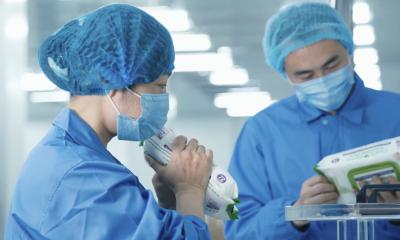Water purity for dialysis patients
UK - Dialysis patients are exposed to 50 times more mains water than well people. The new 33-bed renal dialysis ward at Southmead Hospital, Bristol, uses at least 1,000 litres of water per hour from the mains water supply. To ensure constant flow - and water purity for patients - the ward has installed a water treatment system
Describing the prerequisites in choosing a system, Rob Sims, the hospital’s renal technician, said a standby capacity would be essential, in case any system failure put patients at risk, and procedures for routine maintenance and sanitisation would have to automatically and reliably operate during limited time windows. In addition, it should provide an infrastructure able to also provide water to the Day Case, Intensive Care and High Dependency Units, to meet future needs. Finally, the system would have to meet AAMI (1982), Renal Association (1995) and European Pharmacopoeia (1999) quality standards. The ELGA Process Water system was chosen.
Mains water, pre-treated to remove chloramines and hardness salts, feeds two continuously operating ELGA DWA reverse osmosis units in direct recirculation mode to remove 95-98% of all dissolved salts. Unused water recycles through a secondary ultrafiltration (UF) membrane to ensure constant purification and eliminate the need for water storage tanks, usually the main source of system contamination, the manufacturer explains. ‘The water then enters an ELGA DWA NephroSafe second membrane ultrafiltration system, which completely removes 99% of all organic molecules to ensure complete quality standards compliance. The purified water is then recirculated through a 500 metre hygienic PEX-A ring main that runs in the roof space above the Day Case, Intensive Care and High Dependency units to the dialysis machines, finally returning to the inflow side of the ultrafiltration unit. Finally, a fully automatic and validated sanitisation procedure heats the circulating water in the ring main to 90 C and recirculates it through the ultrafiltration unit inlet for a pre-determined length of time before disposal.’
Rob Sims has reported that the total viable bacteria count (TVC) and endotoxins were undetectable during analyses of monthly water samples by an independent laboratory.
* ELGA Process Water is part of Veolia Water Solutions & Technologies (VWS), a subsidiary of Veolia Water. The group specialises in designing technological solutions and construction of facilities for water treatment, and operates in around 50 countries.
17.11.2006





